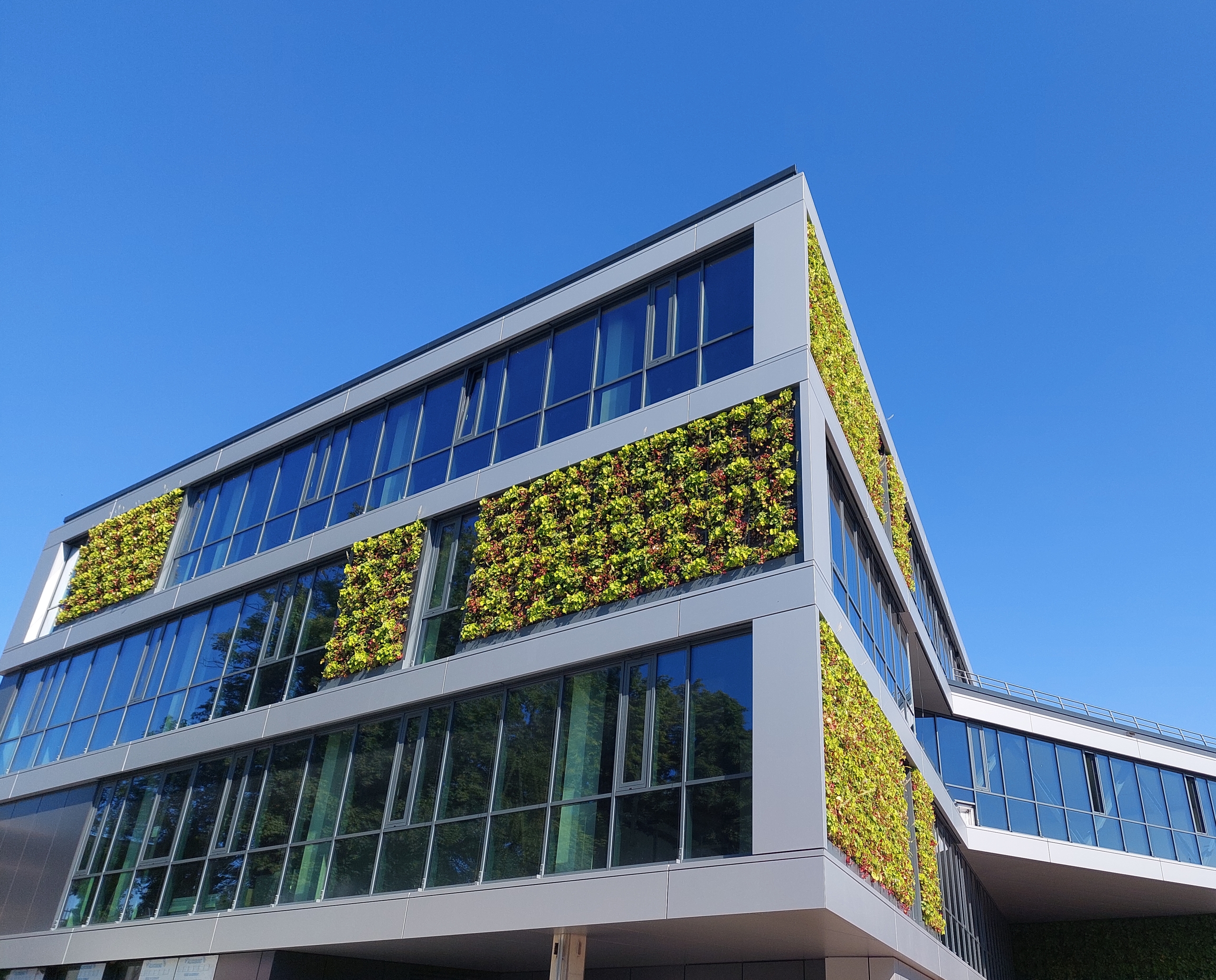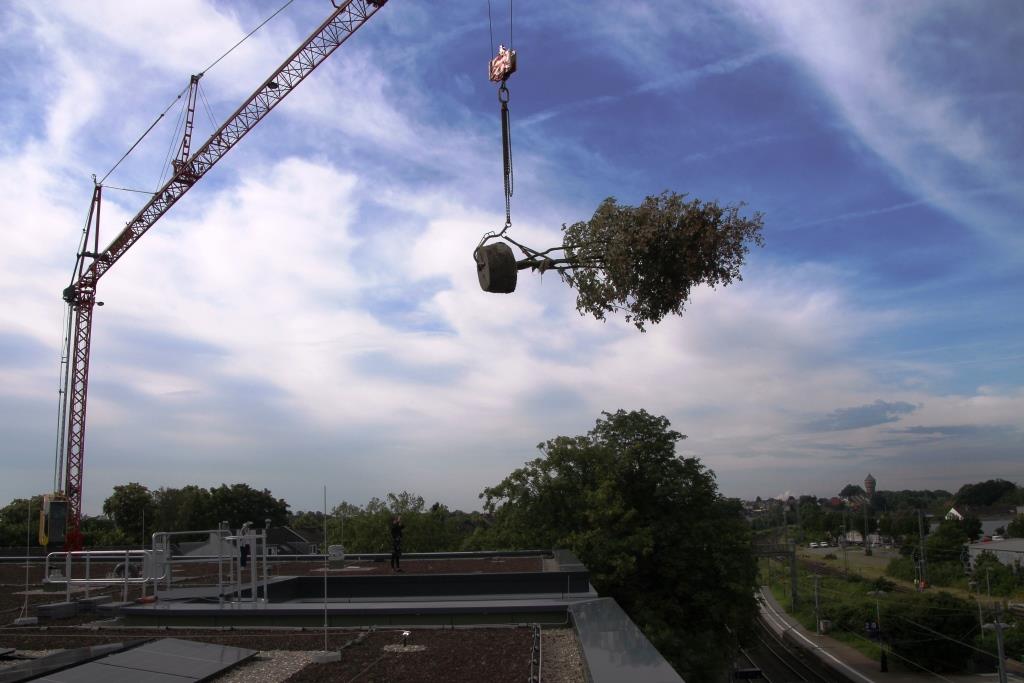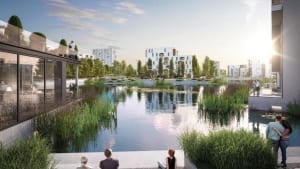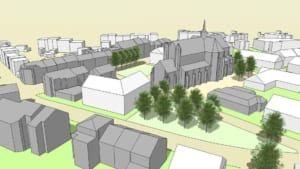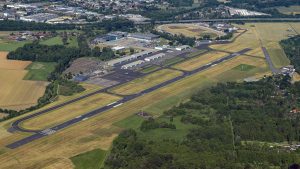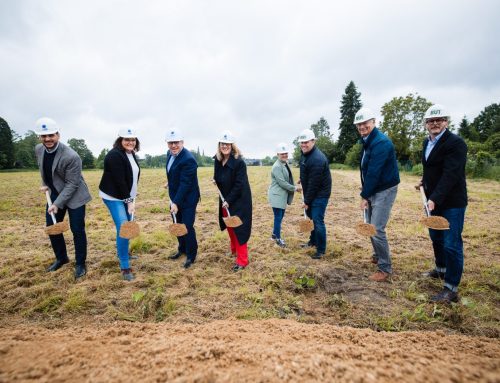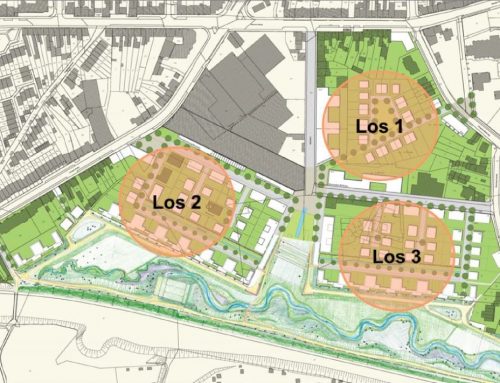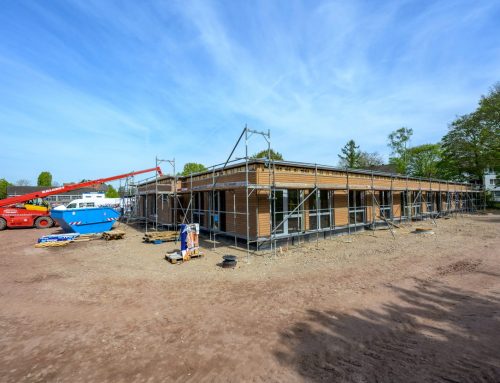Around 200 square meters of green façade, 1,340 square meters of green roof. The new building at Rheydt main station scores with measures for the microclimate and special quality of stay. The greening work is now almost complete. Today, a large ironwood tree was planted in the inner courtyard using a mobile crane.
The images of the recent flood disaster in Bavaria and Baden-Württemberg are still fresh in our minds. They show once again how important local climate adaptation and flood protection are. At Rheydt main station, appropriate measures have already been incorporated into the planning. Large areas of green roof and façades not only provide refreshing coolness on hot summer days, the greenery on the roof also reduces the risk of flooding by increasing water retention and greatly reducing overflows. This ensures that even during heavy rainfall events, little or no rainwater is released from the roof into the sewer system, which is thus relieved. The risk of flooding is reduced. “These are not only guidelines for a sustainable building, but also for quality of life and economic efficiency,” explains Dr. Ulrich Schückhaus, Chairman of the Development Company of the City of Mönchengladbach, the client of the new building. “Against the backdrop of increasingly hot summers and more frequent heavy rainfall events, cooling and infiltration areas are not a luxury, but essential for the use and durability of the investment. At Rheydt main station, we are showing how climate adaptation can work in Mönchengladbach.”
The increased water retention makes it possible to use more evaporative and biodiverse plants even during the increasing summer heat and long dry spells. Together with a total of around 10,000 plants in the façade greening, this results in a noticeable cooling effect on hot days, which benefits the health and well-being of travelers, visitors and employees at Rheydt main station.“When selecting the plants, we made sure to use native, evaporative and insect-friendly plants,” says Peter Küsters, Urban Climate Architect from the planning office Küsters Grün.Stadt.Klima. The irrigation system for the façade greening is sensor-controlled and therefore particularly water-efficient. “Our aim is to generate maximum evaporative cooling in summer while keeping maintenance and upkeep costs as low as possible.”
Advanced technology with maximum ecosystem services and cost-effectiveness was also used for the green roofs. “Instead of simple extensive green roofs, such as those found on large industrial hall roofs, at Rheydt Central Station we used retention roof greening with throttled rainwater run-off. This not only reduces the risk of flooding and subsequent costs, but also increases cooling capacity and biodiversity. And the bottom line is that this doesn’t cost a penny, but saves costs for backwater channels and protects against health risks in the increasingly hot summers,” explains Küsters. A large ironwood tree was planted in the inner courtyard today as the last major greening measure. Ironwood trees are known among experts as “trees of the future”, as they are not only resistant to urban climates, but also have a high cooling capacity.
Pioneering new building
EWMG is investing tens of millions at Rheydt main station – for Rheydt and the city as a whole. In April 2023, it celebrated the topping-out ceremony with all those involved in the new station building. The building – both the new modern police station and the space for retail and office users – is now nearing completion. The opening is planned for after the summer vacation. The new building is equally impressive in terms of its urban planning quality and functional aspects. Together with the greening measures, photovoltaics and the use of recyclable materials contribute to the sustainability of the building.
